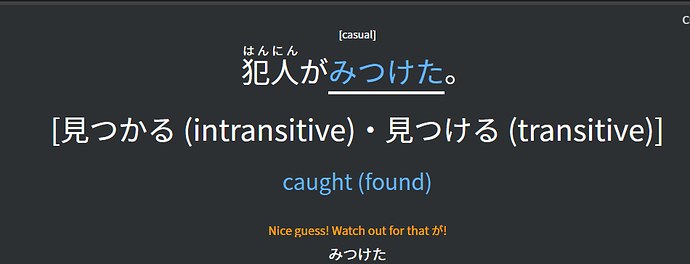First thing first this grammar point should have a giant warning label that says hard on it.
I’ve spent about an hour trying to wrap my head around what a transitive and intransitive verb is but honestly I couldn’t even give a bad explanation if you put a gun to my head. But the reviews themselves aren’t that bad it’s just which one makes sense. But I have a question on a review question I got and I don’t even know if it pertains to shit topic but I got it while cramming this lesson.
So, I got the question wrong as you can see. And yes I did guess that I was supposed to replace る with た. But what does the yellow bottom hint mean, why it is saying watch out for that が? As in how does が explain to me that the ending was supposed to be みつかった? To be clear I do realize I got it wrong I just don’t know how the が determines.
As far as I think I understand が is normally used to show the subject of a sentence? Or am I missing something

